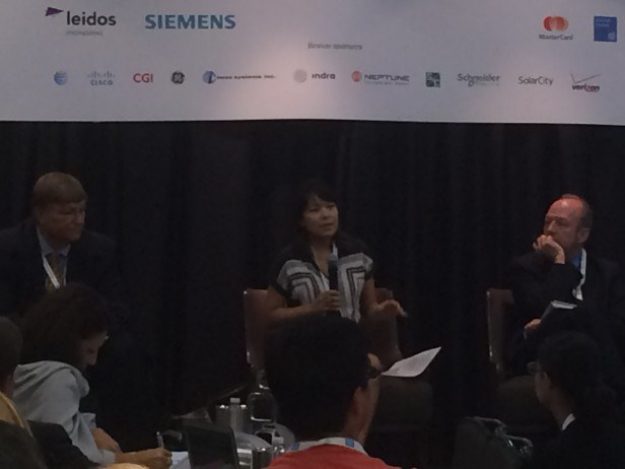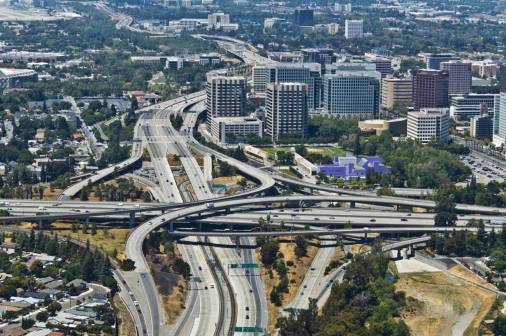Pittsburgh publishes new IT innovation roadmap

Pittsburgh is plotting a course for its IT future with a new “Roadmap for Inclusive Innovation,” released earlier this month.
After more than a year of drafting and discussion, the city’s Department of Innovation and Performance published the the new initiative on a standalone website to lay out the city’s plans for IT innovation over the coming months and years. In particular, the roadmap lays out six broad goals for the city: address the digital divide, empower city-to-citizen engagement, provide open data, improve internal operations and capacity, advance the clean technology sector and promote the local business environment.
Overall, city leaders believe the plan will be key for the development of Pittsburgh’s “digital infrastructure” as the city overhauls the way it handles IT issues.
“A good digital infrastructure is just important as running water or electricity,” Chief Innovation and Performance Officer Debra Lam said. “It’s a public good.”
At the Smart Cities Council’s “Smart Cities Week” conference Wednesday, Lam called the plan a “milestone” for the city as it tried to answer some key questions about its future.
“We certainly had executive support and a mandate, but how would we want to holistically and methodically implement that change that would involve everyone, and how can we make sure that innovation is long lasting even when I’m gone or other people take over?” Lam said. “How can we institutionalize innovation, beyond just one mayor’s passion when another mayor comes in? Because that’s inevitable.”
Lam said the initiative stems from a desire for an IT overhaul in the city from Mayor Bill Peduto, who took office last January.
Peduto has a background in the field, previously overseeing the Pittsburgh’s information systems department as a city councilman. After he was inaugurated, Peduto moved quickly to remake the department — Lam’s staff would no longer strictly deal with internal IT, but would also lead citywide technology programs.
“If someone asked us to change a password, we’d change a password,” Lam said. “Now we really have a much wider portfolio and we also have a more external role in the city.”
As Lam worked with Peduto to determine what kinds of projects the retooled department would lead, she said they realized that they needed a clear-cut plan to keep the city’s IT goals in line.
“It’s really easy for me to be sold silver bullet solutions from all these vendors,” Lam said. “What we wanted in the city was a strategic plan.”
Over the course of the last year, the mayor held a series of roundtable events, inviting public and private sector leaders from a variety of different fields for conversations about what they were already working on and what kinds of IT projects they want to see in the city going forward.
From there, the city was able to compile the roadmap. Lam called the development of the document a “methodical” process, but she believes each one of its listed goals will help city staff confront key questions about how they want to shape Pittsburgh’s IT future.
For the first two areas of the plan, Lam believes developing a strong “digital infrastructure” is key. As officials work to make free Wi-Fi more widely available in Pittsburgh’s public spaces and improve city websites, Lam thinks the city can both help close the digital divide and get citizens more engaged with their government.
Lam also stressed that meeting the plan’s goal to open up more of the city’s data can have practical impacts beyond simply building public trust. A specific goal of the open data portion of the plan is to reduce the strain on the city’s informational 311 service by releasing data sets that could answer frequently asked questions.
“It’s not just open data for open data’s sake, but how is open data applied?” Lam said.
The fourth piece of the plan — the city’s effort to improve internal operations and capacity — might sound broad, but Lam said it has a very specific focus when it comes to IT.
“How can we improve internal training for the city?” Lam said. “How can we make sure our workforce is able to respond to the issues we’re talking about?”
Lam believes the final two focuses of the plan go hand-in-hand. The steel and coal industries don’t dominate the city’s economy the way they did decades ago, and Lam believes supporting the burgeoning clean technology movement in the city can also help foster small business growth in the area.
“We have a strong industrial heritage, but we need to think about the possibilities to transform it into the 21st century,” Lam said. “It’s creating the entrepreneurship and economic development and ensuring that we support doing business in the city.”
In total, the roadmap calls for 100 specific actions taken by the city, and Lam said they plan on measuring the progress they make on each one.
By keeping close tabs on that progress, Lam hopes Pittsburgh can use the roadmap not just to look at possible paths, but as a concrete reflection of the city’s eventual destination.
“One of the things that mayor said at the announcement was that ‘if you’re not measuring, you’re just practicing,’ and I think we’re getting into a little bit of that now,” Lam said.






